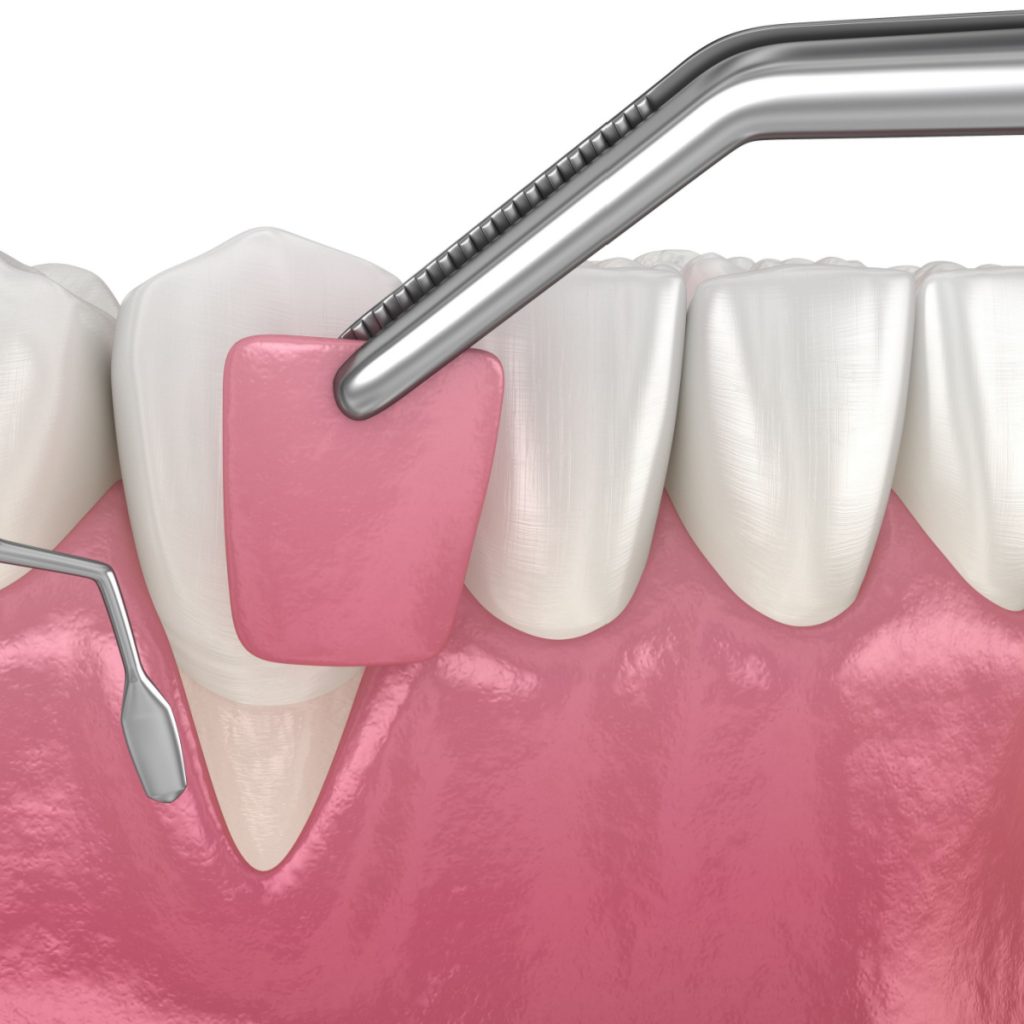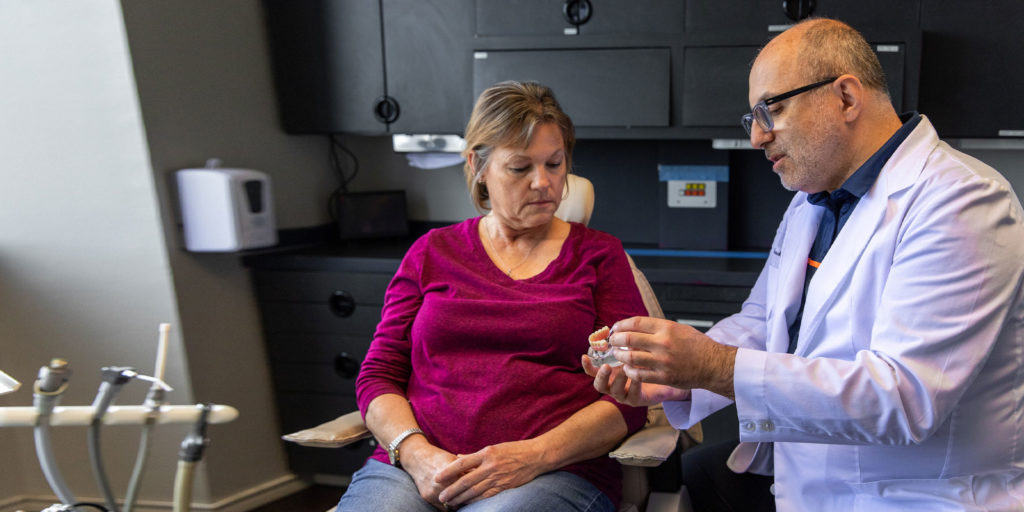

Gum recession, a prevalent oral health issue, involves the deterioration of the gums’ soft tissue. Left untreated, it can lead to the exposure of sensitive tooth and root structures, ultimately resulting in tooth and bone loss. Beyond the pain it causes, gum recession limits food choices and affects the appearance of your smile by making teeth look elongated and discolored.
At DFW Implant Center in Arlington, TX, our specialized team, led by experienced periodontist Dr. Farhad E. Boltchi, employs advanced technological approaches to gum grafting. With over 25 years of expertise, Dr. Boltchi skillfully restores even advanced stages of gum recession. New patients can call 817-663-4704 while returning patients can reach us at 817-467-7731 to schedule an appointment and regain a healthy, natural gum line.
If you have bleeding gums in Arlington, TX reach out to our experienced team at DFW Implant Center, we can help.


Gum grafting, also known as soft tissue augmentation and gingival grafting, is a procedure aimed at treating gum recession, a condition where the soft tissue of the gums starts to recede, exposing tooth and root surfaces. This recession can lead to increased sensitivity and discomfort, and, if left untreated, may result in tooth and bone loss.
During a gum graft procedure, our periodontist takes a small piece of tissue, often from the patient’s palate or a donor source, and grafts it onto the affected area of the gums. This helps to rebuild and restore the gum tissue, covering exposed tooth roots.
The three main types of gum grafting techniques include:


Gingival grafting offers several benefits in addressing gum recession and related oral health issues:
Individuals who may qualify for gum grafting typically include those experiencing gum recession and related issues. The procedure is often recommended for:
Dr. Boltchi will determine if you’re a candidate for gum grafting during your initial consultation.
Before undergoing your gum grafting surgery, you’ll have a consultation with Dr. Boltchi. During this appointment, Dr. Boltchi will assess your oral health, examine the extent of gum recession, discuss your concerns, and determine if gum grafting is the appropriate solution for your needs. This is also an excellent opportunity to ask questions and understand the details of the procedure.
On the day of the gum grafting procedure, we’ll administer a local anesthetic to numb the treatment area, ensuring a pain-free experience. Depending on the complexity of the case and your preference, sedation dentistry options may also be discussed to enhance relaxation during the procedure.
Once you’re comfortable and adequately numbed, the gum grafting procedure begins. Dr. Boltchi will graft the tissue in place using one of the techniques previously mentioned.
After undergoing gum grafting, diligent aftercare is crucial for a successful recovery. Follow these guidelines from Dr. Boltchi and our team to promote healing and optimize the results of the gum graft and procedure:
The procedure is performed under local anesthesia to ensure the patient’s comfort. Post-operatively, some discomfort is expected, but it can be managed with prescribed or over-the-counter pain medications.
In some cases, insurance may cover the procedure if it is deemed medically necessary, such as for addressing issues like gum disease or preventing further oral health complications. However, if the procedure is primarily for cosmetic reasons, insurance may not provide coverage. It’s essential to check with your insurance provider and consult with your periodontist to understand the specifics of your coverage and explore potential financing options for the dental procedure.
The duration varies depending on factors such as the extent of gum recession and the chosen grafting technique. Generally, it can take anywhere from one to two hours. Your periodontist will give you a more accurate breakdown of the time for the procedure during your consultation.
Periodontists employ precise techniques to minimize scarring. In many cases, any residual scarring is typically minor and not easily noticeable. Your periodontist can provide guidance based on your specific case.
Take the pivotal first step towards a healthier, more confident smile by scheduling a consultation with Dr. Boltchi at DFW Implant Center. Entrust your gum health to our seasoned periodontist, who brings over 25 years of expertise and advanced techniques to provide unparalleled care.
Whether you’re a new patient ready for transformative care or a returning patient continuing your path to lasting confidence, call 817-663-4704 if you’re a new patient or 817-467-7731 if you’re current. Your journey to a revitalized and radiant smile begins now. DFW Implant Center serves Arlington and surrounding areas such as Irving, Fort Worth, and Grapevine, TX.
I understand the information disclosed in this form may be subject to re-disclosure and may no longer be protected by HIPAA privacy regulations and the HITECH Act.

800 West Arbrook Blvd
Suite 360 Arlington, TX 76015